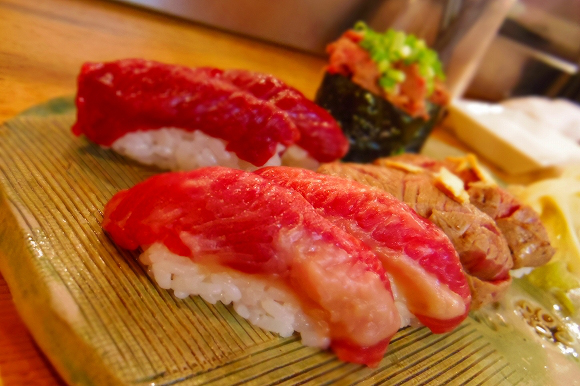
Although “sushi” is often thought to mean raw fish, that’s not actually what the word means. The name actually refers to vinegared rice, and some varieties of sushi don’t contain any fish at all.
Kappa maki, for example, are rolls of seaweed, rice, and cucumber, while inarizushi is made with rice and fried tofu. On the other end of the spectrum, if you’re in the mood for non-seafood sushi but also don’t want to go vegetarian, you can try horse sushi, like we recently did.
Tokyo’s Ebisu neighborhood is sort of the sophisticated cousin to loud and trendy Shibuya. Today, it’s a popular hangout for young professionals looking to leave the college bar scene behind, but Ebisu’s roots are a little more blue-collar. The area was once the site of the Yebisu Beer brewery, and just two minutes’ walk from Ebisu station there used to be a bustling market.
The market is now long-gone, and in its place you’ll find the Ebisu Yokocho, a collection of 21 unique restaurants and bars huddled together under a single roof. Inside, mouth-watering smells drift out of the numerous kitchens and mingle in the air with the laughter of customers sitting within an arm’s length of diners at different establishments.
Towards the back of Ebisu Yokocho you’ll come to Nikuzushi, or “Meat Sushi,” which serves exactly what its name promises. In particular, the restaurant has earned a reputation among Japan’s gourmet subset that goes wild for horsemeat.
While you can order a la carte, we instead opted for the chef’s recommendation of eight pieces of horsemeat sushi for 1,600 yen (US$15), which saved us 300 yen compared to what separate orders would have cost us. Nikuzushi employs the same naming conventions that are used with tuna for its horsemeat, and our set came with two pieces each of akami (lean meat), harami (belly), nakaochi (back), and negi toro (diced fatty meat with green onions wrapped with seaweed).
Each cut had its own unique charms, whether the chewy nakaochi, firm akami, subtle char of the seared harami, or flavorful kick of the negi toro. What they all shared, though, was an exquisite deliciousness, accented by the meat juices mixing with the warm vinegared rice.
The southern island of Kysuhu is a major producer of the horsemeat Japan eats. However, in talking to the owner of Nikuzushi, Mr. Nakamura, we found out that most of the restaurant’s horsemeat is imported from Canada. Not only does this help to keep costs down and allow Nikuzushi to serve its fare at the reasonable prices it does, Nakamura tells us that in comparison to domestic sources, horsemeat from Canada is leaner, with a less gamey taste that goes especially well with vinegared rice.
Horse isn’t the only meaty choice for diners at Nikuzushi, though, which also has amazing beef. We tried a cut called sashitoro.
Seared by Nakamura right before our eyes, the 680-yen cut is one of the pricier items on the menu. Juicy and so tender it melts in your mouth, it’s definitely worth that much, if not more, though.
Even among Japanese people, not everyone regularly eats horsemeat, and we understand if you have similar reservations. If you feel, though, that even after the extensive equestrian contributions to human society in the fields of transportation, agriculture, and gambling, that the animals should also nourish us directly, Nikuzushi is a fine place to dip your toes in the world of gourmet horsemeat.
Restaurant information
Nikuzushi / 肉寿司
Address: Tokyo-to, Shibuya-ku, Ebisu 1-7-4, Ebisu Yokocho-nai
住所 東京都渋谷区恵比寿1-7-4 恵比寿横丁内
Open 5 p.m.-5 a.m.
Closed on Sundays and holidays
[ Read in Japanese ]

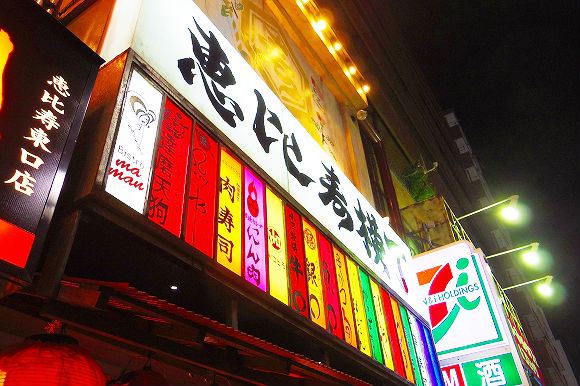
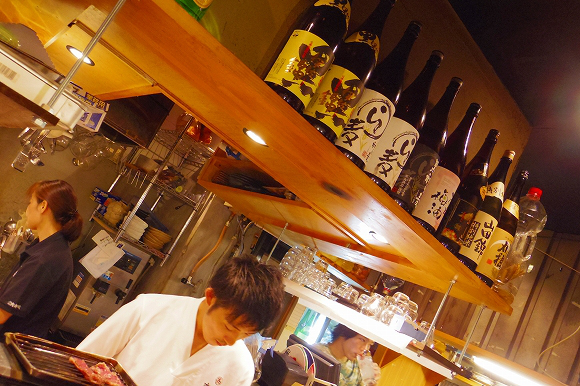
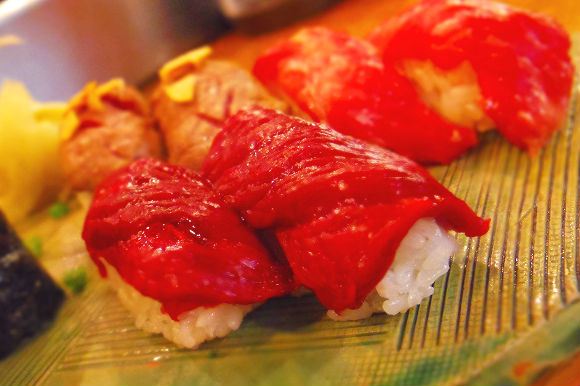
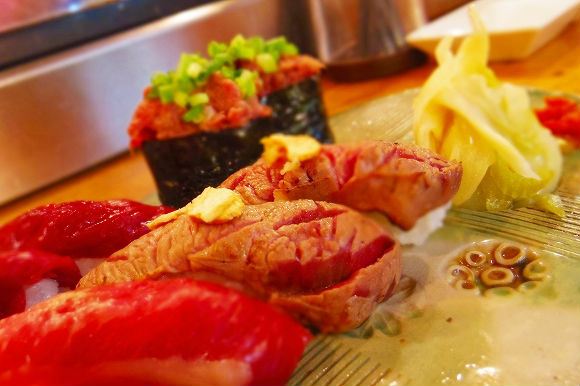
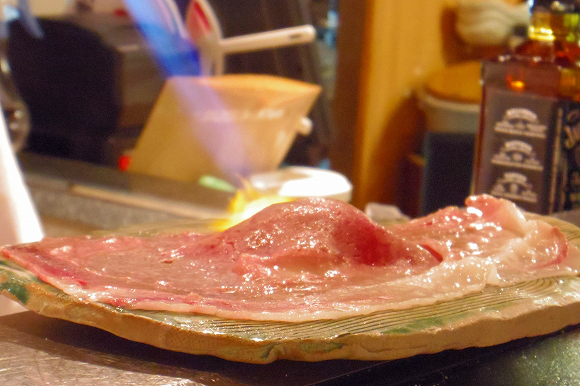
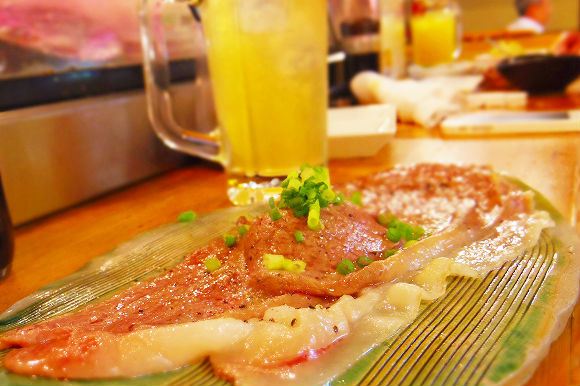
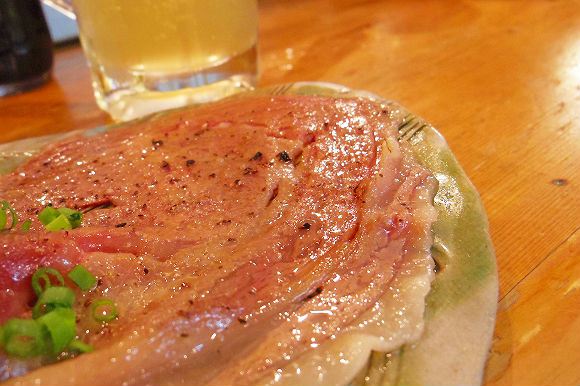
 Mosaic Sushi: gorgeous culinary craze sweeps the internet【Video】
Mosaic Sushi: gorgeous culinary craze sweeps the internet【Video】 Rainbow sushi: a colorful twist on everybody’s favorite roll 【Pics】
Rainbow sushi: a colorful twist on everybody’s favorite roll 【Pics】 A feast for all sushi lovers — the amazing 1,000-yen lunch at Sushi Takehan Wakatsuki!
A feast for all sushi lovers — the amazing 1,000-yen lunch at Sushi Takehan Wakatsuki! This homemade panda sushi from Japan contains no meat or fish, but tons of cuteness
This homemade panda sushi from Japan contains no meat or fish, but tons of cuteness Starbucks at Shibuya Scramble Crossing reopens, but is it really bigger and better than before?
Starbucks at Shibuya Scramble Crossing reopens, but is it really bigger and better than before? Icon’s Mac & Cheese Burger contender for best burger in Tokyo【Taste test】
Icon’s Mac & Cheese Burger contender for best burger in Tokyo【Taste test】 One of Japan’s oldest castles now lets travelers spend night on the grounds, drink in its keep
One of Japan’s oldest castles now lets travelers spend night on the grounds, drink in its keep Foreigner’s request for help in Tokyo makes us sad for the state of society
Foreigner’s request for help in Tokyo makes us sad for the state of society Bad tourist manners at Mt Fuji Lawson photo spot prompts Japanese town to block view with screens
Bad tourist manners at Mt Fuji Lawson photo spot prompts Japanese town to block view with screens McDonald’s Japan’s new pancake pie is a taste sensation
McDonald’s Japan’s new pancake pie is a taste sensation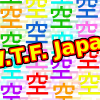 W.T.F. Japan: The top five “sora” references of all time! 【Weird Top Five】
W.T.F. Japan: The top five “sora” references of all time! 【Weird Top Five】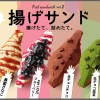 Fried sandwiches arrive in Tokyo, become hot topic on social media
Fried sandwiches arrive in Tokyo, become hot topic on social media Orange Juice Crisis ’24 – Japan’s OJ supplies drying up
Orange Juice Crisis ’24 – Japan’s OJ supplies drying up Studio Ghibli unveils new goods that tip the hat to The Cat Returns
Studio Ghibli unveils new goods that tip the hat to The Cat Returns Red light district sushi restaurant in Tokyo shows us just how wrong we were about it
Red light district sushi restaurant in Tokyo shows us just how wrong we were about it Japanese city loses residents’ personal data, which was on paper being transported on a windy day
Japanese city loses residents’ personal data, which was on paper being transported on a windy day McDonald’s new Happy Meals offer up cute and practical Sanrio lifestyle goods
McDonald’s new Happy Meals offer up cute and practical Sanrio lifestyle goods Japanese ramen restaurants under pressure from new yen banknotes
Japanese ramen restaurants under pressure from new yen banknotes Ghibli Park now selling “Grilled Frogs” from food cart in Valley of Witches
Ghibli Park now selling “Grilled Frogs” from food cart in Valley of Witches Two things to do, and two things not to do, when leaving a traditional Japanese inn
Two things to do, and two things not to do, when leaving a traditional Japanese inn New definition of “Japanese whiskey” goes into effect to prevent fakes from fooling overseas buyers
New definition of “Japanese whiskey” goes into effect to prevent fakes from fooling overseas buyers Our Japanese reporter visits Costco in the U.S., finds super American and very Japanese things
Our Japanese reporter visits Costco in the U.S., finds super American and very Japanese things All-you-can-drink Starbucks and amazing views part of Tokyo’s new 170 meter-high sky lounge
All-you-can-drink Starbucks and amazing views part of Tokyo’s new 170 meter-high sky lounge More foreign tourists than ever before in history visited Japan last month
More foreign tourists than ever before in history visited Japan last month New Pokémon cakes let you eat your way through Pikachu and all the Eevee evolutions
New Pokémon cakes let you eat your way through Pikachu and all the Eevee evolutions Disney princesses get official manga makeovers for Manga Princess Cafe opening in Tokyo
Disney princesses get official manga makeovers for Manga Princess Cafe opening in Tokyo French Fries Bread in Tokyo’s Shibuya becomes a hit on social media
French Fries Bread in Tokyo’s Shibuya becomes a hit on social media Sales of Japan’s most convenient train ticket/shopping payment cards suspended indefinitely
Sales of Japan’s most convenient train ticket/shopping payment cards suspended indefinitely Sold-out Studio Ghibli desktop humidifiers are back so Totoro can help you through the dry season
Sold-out Studio Ghibli desktop humidifiers are back so Totoro can help you through the dry season Japanese government to make first change to romanization spelling rules since the 1950s
Japanese government to make first change to romanization spelling rules since the 1950s Ghibli founders Toshio Suzuki and Hayao Miyazaki contribute to Japanese whisky Totoro label design
Ghibli founders Toshio Suzuki and Hayao Miyazaki contribute to Japanese whisky Totoro label design Doraemon found buried at sea as scene from 1993 anime becomes real life【Photos】
Doraemon found buried at sea as scene from 1993 anime becomes real life【Photos】 Tokyo’s most famous Starbucks is closed
Tokyo’s most famous Starbucks is closed One Piece characters’ nationalities revealed, but fans have mixed opinions
One Piece characters’ nationalities revealed, but fans have mixed opinions We asked a Uniqlo employee what four things we should buy and their suggestions didn’t disappoint
We asked a Uniqlo employee what four things we should buy and their suggestions didn’t disappoint Yaizu: Japan’s best sushi market destination even most foodies in Japan have never heard of
Yaizu: Japan’s best sushi market destination even most foodies in Japan have never heard of How to choose a great block of sashimi-grade tuna – 66-year maguro master shares his protips
How to choose a great block of sashimi-grade tuna – 66-year maguro master shares his protips What’s the best type of sushi to end a meal on? Japanese survey picks the pieces
What’s the best type of sushi to end a meal on? Japanese survey picks the pieces Sushi from a vending machine — would you try it? Mr. Sato did
Sushi from a vending machine — would you try it? Mr. Sato did Here’s what a 10,000-yen Sushi Cake from Japan looks like
Here’s what a 10,000-yen Sushi Cake from Japan looks like Japanese diners pick their eight favorite types of sushi, create mouthwatering dinner blueprint
Japanese diners pick their eight favorite types of sushi, create mouthwatering dinner blueprint These beautiful pieces of sushi aren’t actually sushi
These beautiful pieces of sushi aren’t actually sushi Shun seafood sushi with new meat sushi lineup at Japan’s favorite kaitenzushi chain
Shun seafood sushi with new meat sushi lineup at Japan’s favorite kaitenzushi chain Esteemed Japanese sushi chain ranks the top 15 most popular sushi toppings among customers
Esteemed Japanese sushi chain ranks the top 15 most popular sushi toppings among customers We try NEXT MEATS meatless yakiniku: Does it live up to our meat-lover expectations?
We try NEXT MEATS meatless yakiniku: Does it live up to our meat-lover expectations? Should you dip your egg sushi in soy sauce before you eat it? Survey asks Japanese diners
Should you dip your egg sushi in soy sauce before you eat it? Survey asks Japanese diners What’s the best part of Tokyo to live in, and why? Survey gives the top six picks
What’s the best part of Tokyo to live in, and why? Survey gives the top six picks Can you make a proper ehomaki lucky sushi roll with Daiso equipment?
Can you make a proper ehomaki lucky sushi roll with Daiso equipment? Is this frozen tonkatsu sandwich vending machine really worth 700 yen?【Taste test】
Is this frozen tonkatsu sandwich vending machine really worth 700 yen?【Taste test】 We try Domino’s Japan’s new pizza rice bowls
We try Domino’s Japan’s new pizza rice bowls
Leave a Reply